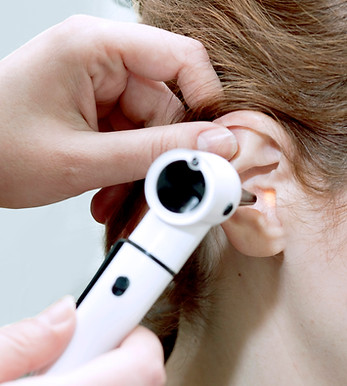
Conditions Treated

Tinnitus
Tinnitus is a word that is used to describe the involuntary perception of sound that originates from within the head. The term is derived from the Latin verb tinnire; meaning to ring. It is commonly described as being a form of high-pitched noise (ie: ringing, hissing or screeching) that is often localised to the ears or the head. The noises that are perceived can, however, vary in quality dramatically, with the more complex perceptions being very difficult for subjects to describe.
Tinnitus can be broadly classified into two distinct categories: objective and subjective.
Subjective tinnitus - the most common form
Subjective tinnitus is by far the most common form that will be experienced in a chronic fashion by, approximately, 10% of the population. The condition seems to be linked to hearing loss with the pitch of the tinnitus signal correlating with the hearing loss that has been acquired.
Our hearing organs (cochlea) are predisposed to deteriorate, insidiously, throughout the course of our lives. The cochlea degenerates slowly from base to apex which leads to a gradual reduction in our ability to hear high pitched sounds as we progress through life. As a result of this the part of our brain that is responsible for processing high pitched sounds becomes starved of input over time. It is this gradual starvation that seems to play an important role in causing tinnitus to be perceived.
As a result of this reduction in activity the nerve cells that make up a portion of the hearing brain start to become abnormally connected to one another to the extent that they begin to fire spontaneously. It is this abnormal, spontaneous activity that is thought to generate the tinnitus signal. The invasiveness of the tinnitus signal appears to be heavily influenced by a large number of factors including cranial nerve activity, emotional states (ie: stress, anxiety etc.) and sleep.
Objective tinnitus - less than 5% of cases
Objective tinnitus accounts for less than 5% of cases overall and is typically caused by noises from our circulatory system (vasculature), breathing or muscles that are in close proximity to the ear. These sounds can also sometimes be heard by an examining clinician via a stethoscope or, in extreme cases, by simply being in a quiet room with the patient. If the sound is originating from our vasculature then the tinnitus is frequently described as being pulsatile and correlating with the rate of our heartbeat. Objective tinnitus must always be thoroughly investigated in order to rule out any cases that can be resolved by either medical or surgical intervention. If there is not a way of resolving the issue via surgery then this type of tinnitus can be successfully treated with an appropriate desensitisation therapy.
Remote Consultations for Tinnitus
I provide remote services for patients who are unable to attend my clinic. I recommend the use of video conferencing applications for this purpose. I am also able to remotely program certain sound therapy systems, via wifi, in order to remotely treat patients with audiological interventions like hyperacusis or tinnitus desensitisation therapy.

Hyperacusis
Over sensitivity to everyday sounds
Hyperacusis is an abnormal sensitivity to sound, in which a common sound stimulus is perceived as being disproportionately intense and uncomfortable. This most often affects sounds of a certain pitch or frequency but in acute cases hyperacusis can occur for all sounds that we hear. There is a much higher prevalence of hyperacusis in tinnitus patients which suggests that there is a common origin for the two conditions.
Recent research indicates that one cause for this condition may be a reduction in a brain chemical that controls the amount of information arriving at the brain from the sensory organs. For this reason the condition can occur with visual over-sensitivity, or photophobia, as part of a global hypersensitivity.
Treatment option include hyperacusis desensitisation therapy and, potentially, cognitive therapy.

Musical Tinnitus
(Musical Hallucinations)
This is a less common form of tinnitus perception which usually manifests as a repetitive segment of music that is localised to a patient’s ears or head. The signal is normally a piece or music or a song that is known to the patient. It is not always constant and can be episodically perceived.
It can also take the form of a repetitive unclear speech-like signal, however, it is important to note that tinnitus will never present as a coherent voice within a patient’s head. This is a treatable condition that will normally respond reliably to sound therapy, amplification (if applicable) and cognitive therapy.

Misophonia
(a literal hatred of certain sounds)
This is a selective sound intolerance condition that will manifest as an intense dislike for very specific noises that are usually generated by other people. Typical “trigger” sounds are often reported by patients as being breathing, chewing, facial noises like lip smacking or sniffing etc.. The common emotional reaction of patient to these noises is often reported as disgust or rage.
This often disrupts a sufferer’s life dramatically by preventing them from being in the presence of their colleagues, family or friends when these triggering noises are perceptible. This condition can be treated with bespoke sound therapy techniques in order to improve auditory filtration whilst a patient’s emotional response can be unpacked and modified via therapy.